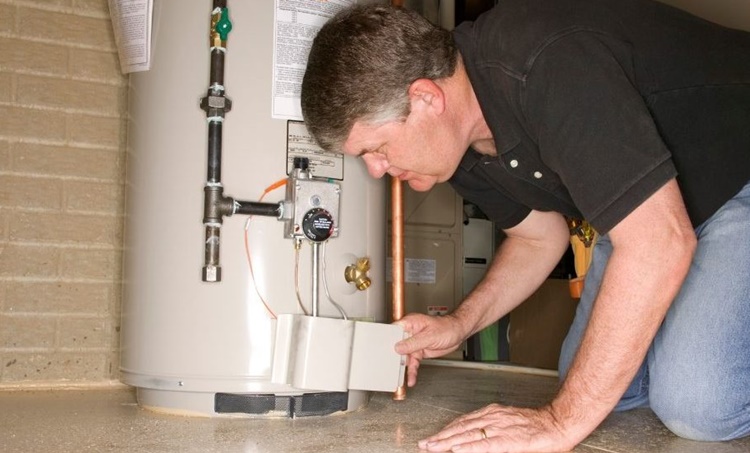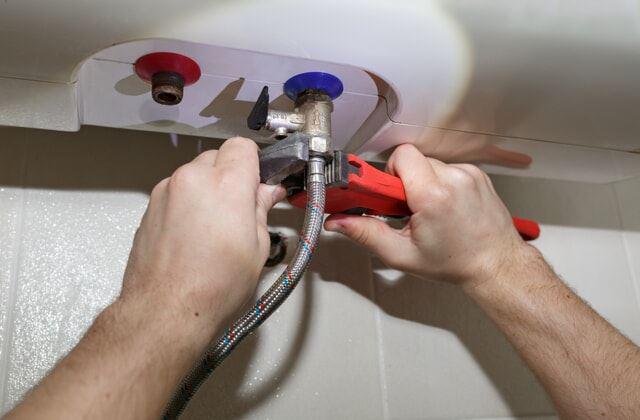Ensuring Longevity of Your Home's Hot Water System: Maintenance Advice
Ensuring Longevity of Your Home's Hot Water System: Maintenance Advice
Blog Article
Nearly everybody may have their own rationale about What Kind of Maintenance Do Water Heaters Need?.

Warm water is vital for daily convenience, whether it's for a revitalizing shower or washing dishes. To ensure your warm water system runs effectively and lasts longer, normal upkeep is crucial. This post provides practical pointers and understandings on how to keep your home's hot water system to avoid disturbances and pricey repair services.
Introduction
Keeping your home's hot water system may seem difficult, yet with a couple of easy steps, you can guarantee it operates efficiently for several years to come. This guide covers everything from recognizing your hot water system to DIY maintenance suggestions and understanding when to call in specialist assistance.
Relevance of Maintaining Your Hot Water System
Regular upkeep not only prolongs the lifespan of your warm water system but likewise ensures it runs efficiently. Disregarding maintenance can cause decreased effectiveness, higher power costs, and even early failing of the system.
Indications Your Warm Water System Needs Upkeep
Knowing when your hot water system requires attention can avoid significant issues. Watch out for signs such as inconsistent water temperature level, weird noises from the heating unit, or corroded water.
Understanding Your Warm Water System
Prior to diving into maintenance jobs, it's handy to understand the fundamental parts of your hot water system. Usually, this consists of the hot water heater itself, pipes, anode rods, and temperature controls.
Regular Monthly Upkeep Tasks
Normal month-to-month checks can assist catch small problems prior to they rise.
Purging the Hot Water Heater
Purging your hot water heater removes sediment buildup, improving efficiency and lengthening its life.
Monitoring and Changing Anode Rods
Anode poles protect against deterioration inside the container. Examining and changing them when broken is essential.
Checking and Changing Temperature Level Settings
Readjusting the temperature level setups ensures ideal efficiency and security.
DIY Tips for Maintenance
You can carry out a number of maintenance tasks yourself to keep your warm water system in leading condition.
Checking for Leaks
Frequently check pipes and connections for leakages, as these can cause water damages and higher bills.
Testing Pressure Alleviation Valves
Examining the stress safety valve guarantees it works properly and avoids excessive stress buildup.
Shielding Pipelines
Protecting hot water pipelines lowers warm loss and can save energy.
When to Call a Professional
While DIY upkeep is beneficial, some issues require professional competence.
Facility Concerns Calling For Specialist Help
Instances consist of major leakages, electric issues, or if your water heater is continually underperforming.
Regular Professional Upkeep Perks
Expert maintenance can consist of extensive evaluations, tune-ups, and ensuring conformity with safety criteria.
Final thought
Regular upkeep of your home's hot water system is crucial for effectiveness, longevity, and expense financial savings. By adhering to these suggestions and knowing when to seek specialist assistance, you can make certain a trustworthy supply of hot water without unexpected disruptions.
Water Heater Maintenance: The Basics
Maintaining your water heater will ensure it operates efficiently and has a longer lifespan. Neglecting regular maintenance can lead to costly repairs and an even bigger chunk of your savings if you have to replace it sooner than necessary. But there’s good news: Most water heater maintenance tasks are relatively simple and easy for homeowners with basic DIY skills.
Flush the Water Heater
Over time, sediment and minerals can build up in the tank, reducing its efficiency and potentially causing damage. To flush the tank, turn off the power or gas supply, attach a hose to the drain valve near the bottom and open the valve to drain the water until it runs clear. Ideally, flush the tank annually.
Replace the Anode Rod
The anode rod is a sacrificial metal rod that helps prevent corrosion inside the tank. Inspect and replace it every three to five years or per the manufacturer's recommendation. To replace the anode rod, turn off the power or gas supply, drain a few gallons of water from the tank, unscrew the old rod and replace it with a new one. If the anode rod is significantly corroded or covered in calcium buildup, it's a sign the water heater may need to be replaced soon.
Tune-Up
A yearly tune-up can help identify potential issues and ensure your water heater operates at peak efficiency. This typically involves checking the thermostat, burner assembly (for gas heaters) and any other components specified by the manufacturer. During a tune-up, the technician may also clean the burner and adjust the pilot light (for gas heaters) or examine the heating elements (for electric heaters).
How to Maintain Your Water Heater
Insulate the tank. Insulating the tank can improve energy efficiency and reduce heat loss, saving you money on energy bills. You can purchase precut insulation blankets designed specifically for water heaters or use standard fiberglass insulation wrapped securely around the tank. Check the temperature. The recommended water temperature for most households is around 120 degrees Fahrenheit (49 degrees Celsius). Higher temperatures can increase energy costs and potentially cause scalding. Use a kitchen thermometer to check the temperature at the faucet nearest the water heater. Monitor water pressure. Excessive water pressure can strain the water heater and cause leaks or even tank failure. Install a pressure-reducing valve if necessary. The ideal water pressure range is between 60 and 70 PSI (pounds per square inch). Test the temperature and pressure (T&P) relief valve. The T&P relief valve is a safety feature that releases pressure if the tank gets too hot or the pressure builds up too high. Test it annually by lifting the lever and allowing a small amount of water to release. Replace the valve if it doesn't release water or reseal properly. Check for leaks. Regularly inspect the tank, pipes and fittings for leaks or corrosion. Deal with issues promptly to prevent further damage. Even a small leak can lead to significant water damage over time. Consider a tankless water heater. If your traditional tank-style water heater is nearing the end of its lifespan ( typically 10 years), consider replacing it with a tankless water heater. These units heat water on demand, reducing standby energy losses and potentially saving you money on your energy bills. Schedule professional maintenance. While homeowners can perform many water heater maintenance tasks, it's still a good idea to schedule professional maintenance every few years. A plumber or HVAC technician can thoroughly inspect the unit, identify potential issues and ensure it operates safely and efficiently. https://www.homeserve.com/en-us/blog/home-improvement/hot-water-heater-maintanence/

Do you enjoy reading up on How to Maintain Your Water Heater & Prolong its Life? Try to leave feedback down the page. We will be delighted to see your insights about this review. In hopes that you visit us again soon. So long as you appreciated our page plz consider to share it. We appreciate your readership.
Get Estimate Report this page